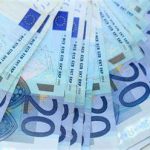Order Counterfeit Money Explained In Fewer Than 140 Characters

The Dangers of Counterfeit Money: Understanding the Risks and Consequences
In a progressively cashless society, making use of physical currency might seem outdated to some, yet counterfeit money remains a persistent issue that impacts individuals, companies, and economies worldwide. The sophistication of present counterfeiting methods has actually only grown, making it important for customers and company owner to inform themselves about the risks, acknowledgment approaches, and legal repercussions of counterfeit currency. This article explores the intricacies of counterfeit money, describes the actions one can require to safeguard against it, and responses regularly asked questions about this appropriate topic.
Comprehending Counterfeit Money
Counterfeit money refers to currency that has been produced illegally with the intent to trick. Counterfeiters use different techniques to reproduce banknotes and coins, often using top quality printing innovation and intricate designs that mimic real currency. While the main intention behind producing counterfeit currency is financial gain, the ramifications extend beyond mere theft; they can destabilize economies, disadvantage sincere businesses, and lead to extreme legal repercussions for those included.
The Impact of Counterfeit Money
Financial Consequences: When counterfeiting ends up being prevalent, it can lead to inflation, a reduction in currency worth, and general wonder about in the country's financial system. This distrust can result in customers holding onto their cash or selecting alternative forms of deals, which can further damage the economy.
Effect on Businesses: Businesses, particularly small ones, are frequently struck hardest by counterfeit currency. Accepting fake notes can lead to substantial financial losses and even personal bankruptcy. Moreover, counterfeiting can damage a business's credibility; customers may be less happy to trust brands that succumb to counterfeiting plans.
Legal Repercussions: Unwittingly accepting counterfeit money does not eliminate liability from individuals or companies. The law normally needs that those who possess counterfeit currency must report it to authorities, as purposefully dealing in fake money can lead to criminal charges.
How to Recognize Counterfeit Money
Acknowledging counterfeit money is important for protecting oneself from monetary loss. Here are some effective methods to identify fake currency:
Check the Print Quality: Genuine currency has a particular texture, color, and print quality that can be difficult to replicate. Inspect banknotes for smudging or blurring, which may indicate counterfeiting.
Try to find Watermarks: Most modern banknotes contain watermarks that are challenging to replicate. Hold the expense up to the light to see if the watermark is present and clear.

Check the Security Thread: Real banknotes have embedded security threads, typically visible when held up to the light. Counterfeit costs might lack these features, or they may be improperly reproduced.
Use a UV Light: Many currencies have elements that fluoresce under ultraviolet light. Checking these functions can help in determining the authenticity of a banknote.
Feel the Texture: Authentic currency is printed on a specific kind of paper that feels different from routine paper. Rubbing your fingers over the costs can help you determine its credibility.
Tips to Protect Against Counterfeit Currency
To lessen the risk of falling victim to counterfeit money, people and services can carry out the following steps:
Educate Employees: Regular training sessions on how to detect counterfeit money can be helpful for workers, specifically those in retail settings.
Utilize Detection Tools: Invest in counterfeit detection devices such as UV lights, pen testers, or digital note validators that can properly check currency authenticity.
Preserve a Close Eye on Transactions: Encourage alert tracking of cash deals and screens for possible counterfeit notes.
Legal Aspects of Counterfeit Money
Participating in the production, distribution, or usage of counterfeit currency protests the law in virtually every nation. Legal repercussions can include significant fines and imprisonment. Government companies, such as the U.S. Secret Service, actively examine counterfeit money operations, and people discovered guilty of participation in counterfeiting might deal with severe penalties.
Regularly Asked echtes geld kaufen (FAQs).
1. Is it unlawful to unwittingly accept counterfeit money?
Yes, while it may not be a criminal charge to accept counterfeit currency unintentionally, there is an obligation to report the counterfeit to authorities. Failure to do so can cause civil liabilities.
2. What should I do if I get counterfeit money?
If you suspect you have actually gotten counterfeit money, do not try to spend it. Instead, report the event to local police or your country's financial authority. Furthermore, record the information of the transaction and where you received the currency.
3. Exist particular currencies that are more commonly counterfeited?
Yes. The U.S. dollar is the most commonly counterfeited currency worldwide, but other currencies like the euro, British pound, and Indian rupee have actually likewise been counterfeited thoroughly.
4. How can I ensure my company isn't accepting counterfeit money?
Train your employees on acknowledging counterfeit notes, invest in detection technology, and carry out rigorous cash-handling practices.
5. What can I do to spread awareness about counterfeiting?
Sharing info through workshops, neighborhood boards, or social media platforms can inform others about the threats and avoidance techniques connected to counterfeit currency.
Conclusion.
Counterfeit currency poses considerable risks not just to specific consumers but also to services and the economy as a whole. Understanding how to recognize fake currency, acknowledging the more implications of counterfeiting, and taking proactive steps can decrease dangers. Awareness and watchfulness can make a substantial difference as we continue to navigate a world where counterfeit money remains a hazard to monetary stability. By equipping themselves with understanding and tools to combat counterfeiting, individuals and services can secure themselves and contribute to a more safe financial environment.
